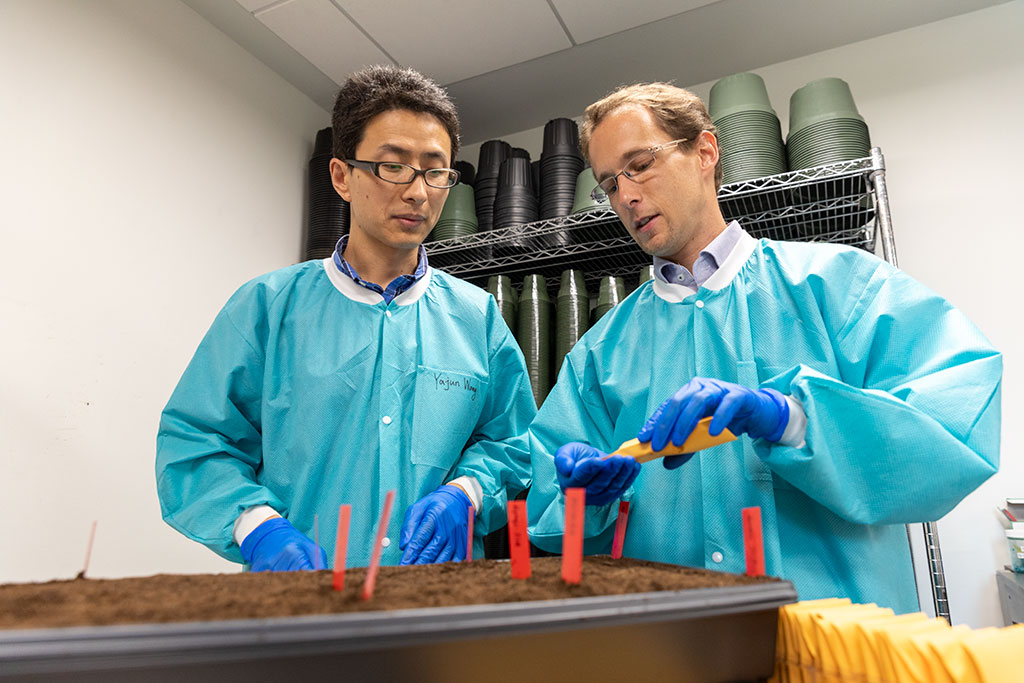Plant Science
Conferring leaf rust resistance in cereal crops
Identifying genes that confer resistance to leaf rust infections could help generate durably resistant cereal crops.

Identifying genes that confer resistance to leaf rust infections could help generate durably resistant cereal crops.
Genes have been identified that confer resistance to multiple leaf rust species in barley. The findings by an international team, led by KAUST researchers, could transform the breeding of durable disease-resistant cereal crops and help support efforts to improve global food security.
“Disease is the exception and resistance is the rule—most microbes do not make us or cereal plants sick,” says Simon Krattinger from KAUST’s Center for Desert Agriculture. “This is called nonhost resistance—resistance of an entire species against all strains of a pathogen. However, nonhost resistance in cereals is poorly understood.”
The cereal-rust relationship is ideal for studying nonhost resistance because all cereals belong to the grass family, but each cereal crop species is infected by only one specific rust (for example, wheat leaf rust only infects wheat). There are molecular factors in barley that prevent wheat leaf rust from establishing colonies; thus, pinpointing the genes responsible for generating this molecular barrier to infection would be invaluable for breeders.

Wheat seeds are planted for trials in the KAUST Core Lab’s Plant Growth Facility.
© 2019 KAUST
“Importantly, nonhost resistance is more durable than host resistance—a plant’s innate immune system provides some protection, but only until pathogens evolve to evade it,” says Krattinger’s postdoc Yajun Wang. “Our biggest challenge was to identify the nonhost resistance genes in barley plants, especially given that barley’s genome is almost twice the size of the human genome.”
All barley cultivars are resistant to leaf rusts of other cereals; therefore, there is no clear genetic variation within barley species that might indicate which genes are involved. KAUST’s collaborators in the Netherlands devised a novel method of narrowing the search.

Yajun Wang and Simon Krattinger plant seeds for their trials in the Plant Growth Facility.
© 2019 KAUST
They infected 1733 barley cultivars with wheat leaf rust. Most plants were resistant, but a few lines developed hints of leaf rust at the seedling stage. This was not enough to create a full infection, but the team was able to crossbreed these lines to generate one line that was highly susceptible to wheat leaf rust. This was then crossed with a normal barley cultivar and analyzed to pinpoint the genetic variations conferring nonhost resistance.
“Through extensive genome analysis, we found the genes that encode a protein receptor kinase to create a barrier to wheat rust in barley,” says Wang. “Transferring these genes into wheat could result in cultivars that are resistant to all races of wheat rust.”
“This is a very promising strategy that could finally solve one of the biggest problems in global wheat production,” notes Krattinger.
References
-
Wang, Y., Subedi, S., DeVries, H., Doornenbal, P., Vels, A., Hensel, G., Kumlehn, J., Johnston, P., Qi, X., Niks, R.E.& Krattinger, S.G. Orthologous receptor kinases quantitatively affect the host status of barley to leaf rust fungi. Nature Plants 5 1129–1135 (2019).| article
You might also like

Bioscience
Digging into the world of plant-growth-promoting microbes

Environmental Science and Engineering
Hydrogen storage solution could lie in lakes

Bioscience
Unraveling modern bread wheat from the genes up

Bioscience
Why do some plants thrive in saline conditions?

Bioengineering
Analytic tool reveals more cream of the crops

Plant Science
Targeting seed microbes to improve seed resilience

Bioengineering
From roots to shoots: decoding strigolactones in plant architecture and symbiosis

Plant Science




